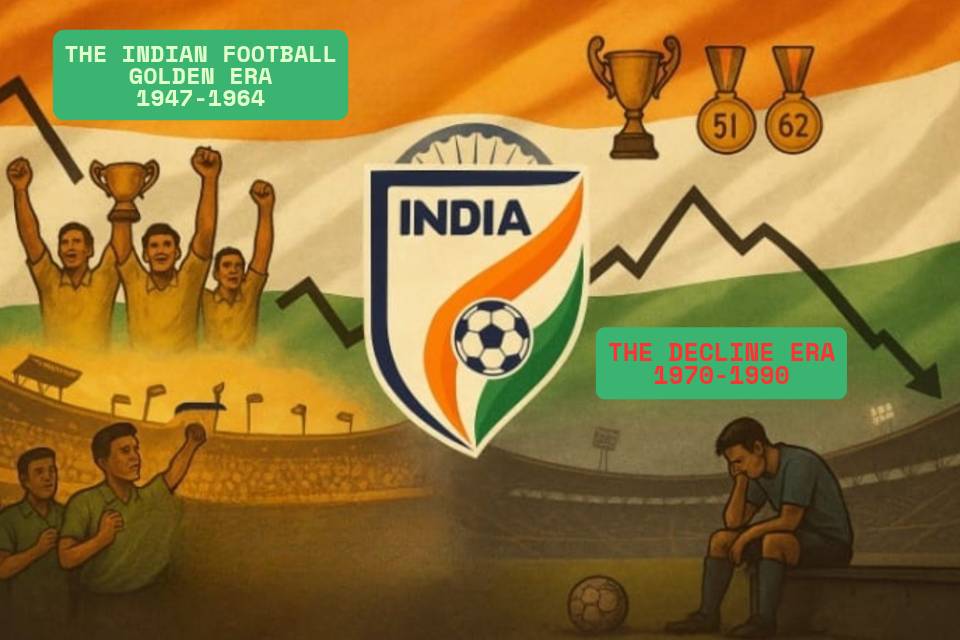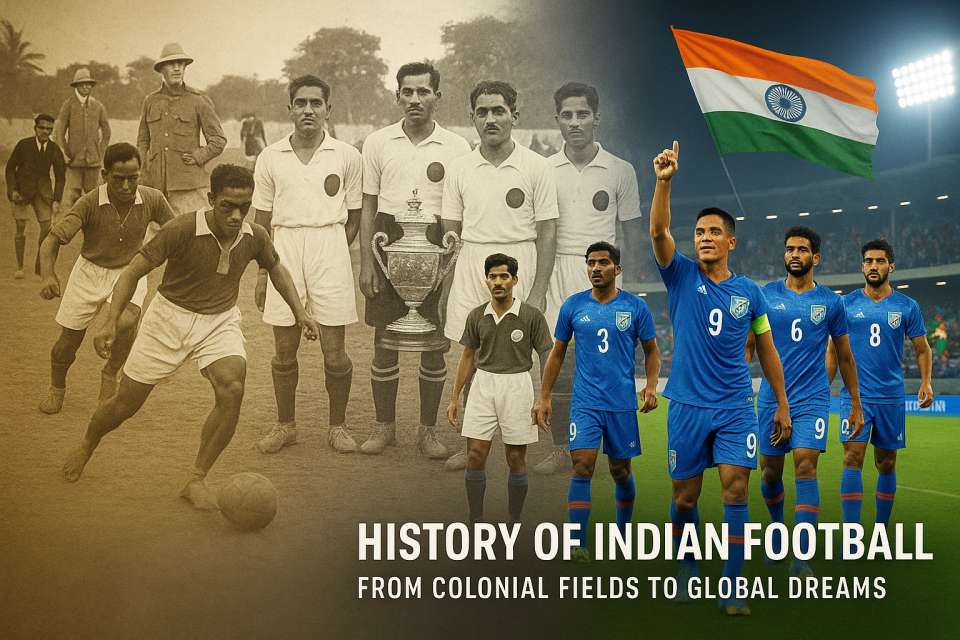The history of Indian football is deeply rooted in the nation’s colonial past, yet its soul beats with courage, pride, and passion. The seeds of this beloved sport were sown in India by Nagendra Prasad Sarbadhikari, widely regarded as the father of Indian football. In the 1870s, he inspired Indian students in Kolkata (then Calcutta) to play a game that, until then, had been dominated by British officers.
What began as barefoot games on colonial fields has transformed into a professional sport with national leagues, international participation, and dreams of qualifying for the FIFA World Cup.
Early Days of Indian Football (Late 19th to Early 20th Century)
While football was introduced to India by the British, it was Nagendra Prasad Sarbadhikari who truly popularized the game among Indian youth. He is credited with forming the first all-Indian football team. In 1889, Mohun Bagan Athletic Club was established—now one of the oldest and most prestigious football clubs in Asia.
Soon, Kolkata became the epicenter of Indian football, with clubs like East Bengal and Mohammedan Sporting emerging as major teams.
Early Indian Football and the Revolutionary Win of 1911
One of the most iconic moments in Indian football history came in 1911, when Mohun Bagan defeated the East Yorkshire Regiment in the IFA Shield final. What made this win even more remarkable was that Indian players competed barefoot and still triumphed over a British military team. This victory wasn’t just a sporting milestone but also a symbolic strike against colonial dominance.
The Golden Era (1947–1964)
Post-independence, Indian football entered its golden age. During this period, India was considered one of the top teams in Asia.
Major Achievements:
- 1948: India participated in the London Olympics and played barefoot due to tradition.
- 1951: Won gold in the first Asian Games hosted in New Delhi.
- 1956: Reached the semi-finals at the Melbourne Olympics, finishing fourth—India’s best Olympic performance to date.
- 1962: Won another gold medal at the Asian Games in Jakarta.
Much of this success is attributed to the legendary coach Syed Abdul Rahim, often considered the finest coach Indian football has ever had.

The Decline (1970s–1990s)
The 1970s marked the beginning of a decline for Indian football:
- Lack of infrastructure and grassroots development
- Poor management by the All India Football Federation (AIFF)
- 1983 World Cup win: The turning point of Indian cricket’s dominance and football’s decline
- Minimal sponsorship and TV coverage
Though football remained popular in West Bengal, Kerala, Goa, and the Northeast, India’s national ranking and international performance steadily declined.
Revival and Professional League Era (2000s–2010s)
In the early 2000s, Indian football slowly began to recover:
- 1996: Launch of the National Football League (NFL)
- 2007: NFL was rebranded as the I-League
- 2014: Introduction of the Indian Super League (ISL), bringing glamour, international players, and significant investment
The arrival of the ISL revitalized Indian football, making it more exciting, viewable, and marketable.
The Modern Era (2020–Present)
In recent years, Indian football has seen notable growth:
- Hosting the 2017 FIFA U-17 World Cup: Inspiring Millions of Young Football Enthusiasts in India
- AIFF introduced youth development programs and elite academies to nurture future stars
- Clubs like ATK Mohun Bagan, FC Goa, and Mumbai City FC are representing India in AFC competitions
Sunil Chhetri – The Face of Modern Indian Football
Sunil Chhetri, currently the fourth-highest active international goal-scorer after Cristiano Ronaldo and Lionel Messi, is the undisputed face of Indian football. His dedication, leadership, and inspiring journey have motivated a new generation of Indian footballers.
Read this also :- Who Has the Most Goals in Football History ?
Legendary Indian Footballers
Here are some of the iconic names who shaped Indian football:
- Sailen Manna, P.K. Banerjee, Peter Thangaraj – Icons of the golden era
- I.M. Vijayan, Bhaichung Bhutia – Stars during the transitional decades
- Sunil Chhetri – Record-holder and modern-day legend
The Future of Indian Football
Indian football’s future looks bright with ambitious goals set by AIFF:
- Vision 2047: A strategic plan to elevate Indian football on the global stage by the nation’s 100th year of independence
- Focus on grassroots development, modern coaching, and world-class infrastructure
- Active participation in top-level Asian tournaments like the AFC Champions League
- Realistic hopes to qualify for the FIFA World Cup in the coming years
Conclusion
The history of Indian football is a journey of resilience, pride, setbacks, and remarkable comebacks. From defeating a colonial army barefoot in 1911 to dreaming of the FIFA World Cup, the sport has come a long way.
With growing fan support and youth participation across the nation, football in India is not only surviving—it’s thriving. The road ahead may be long, but with the right direction and determination, Indian football’s global dream is closer than ever before.
Final Thoughts
So friends, that’s all for today’s information. If you find any mistake or have any suggestion, then definitely share it with us. Your feedback will help us to improve and we will try to bring even better content for you in future






